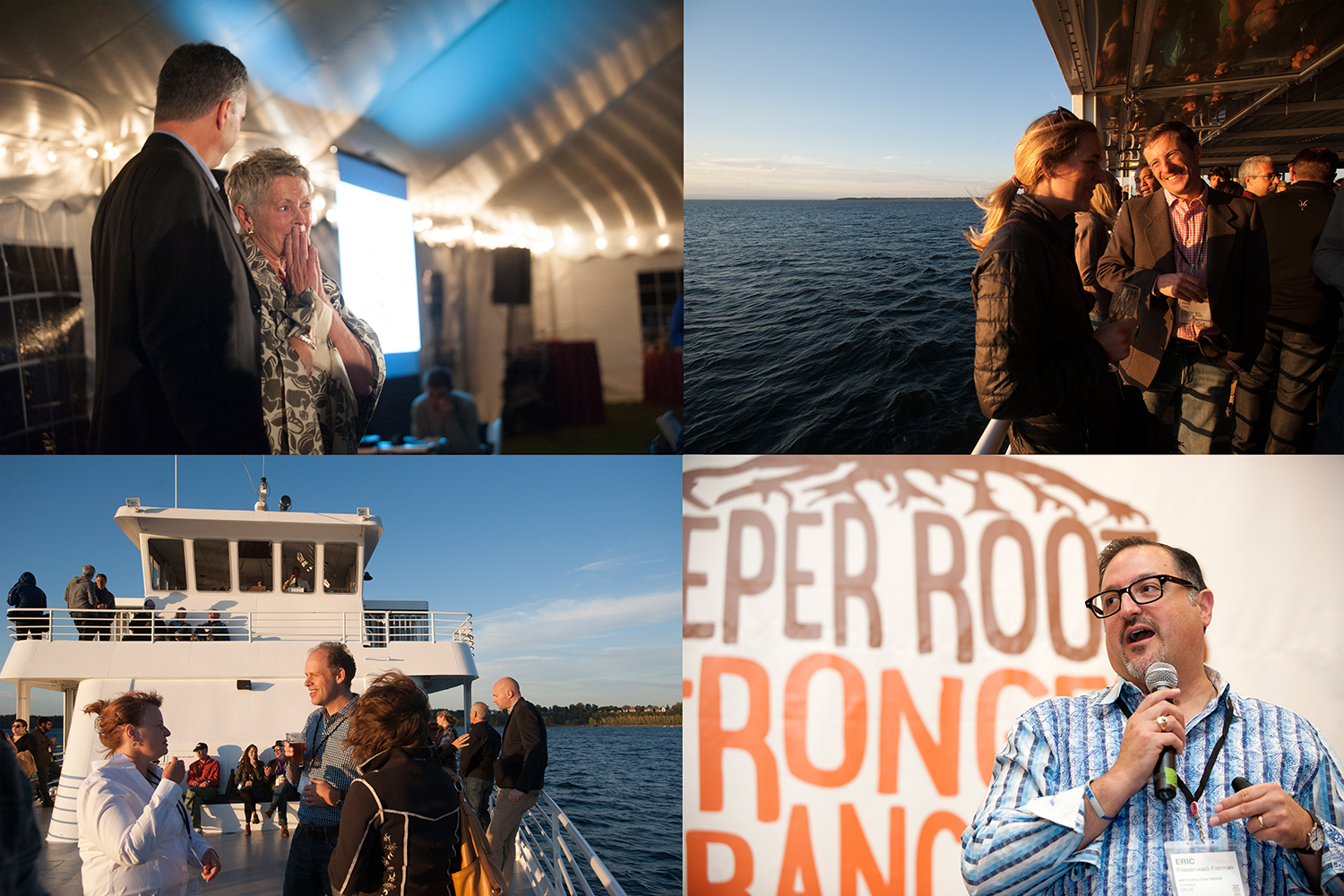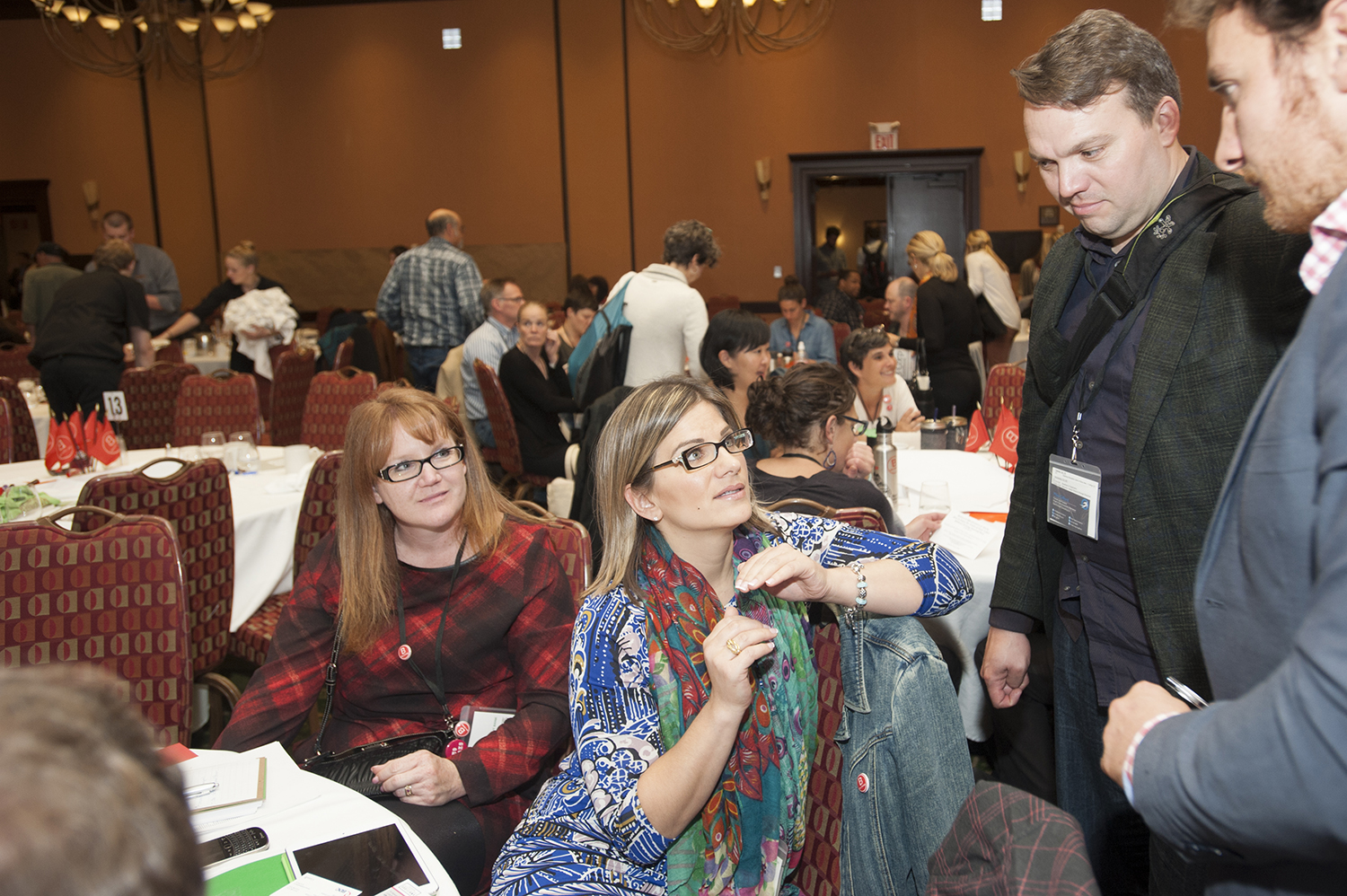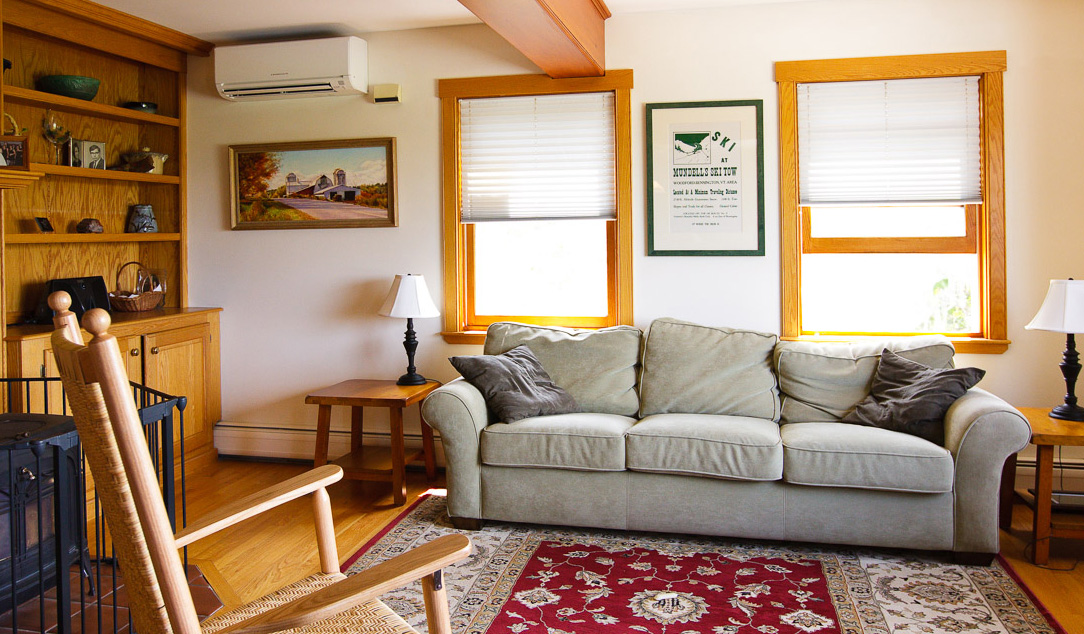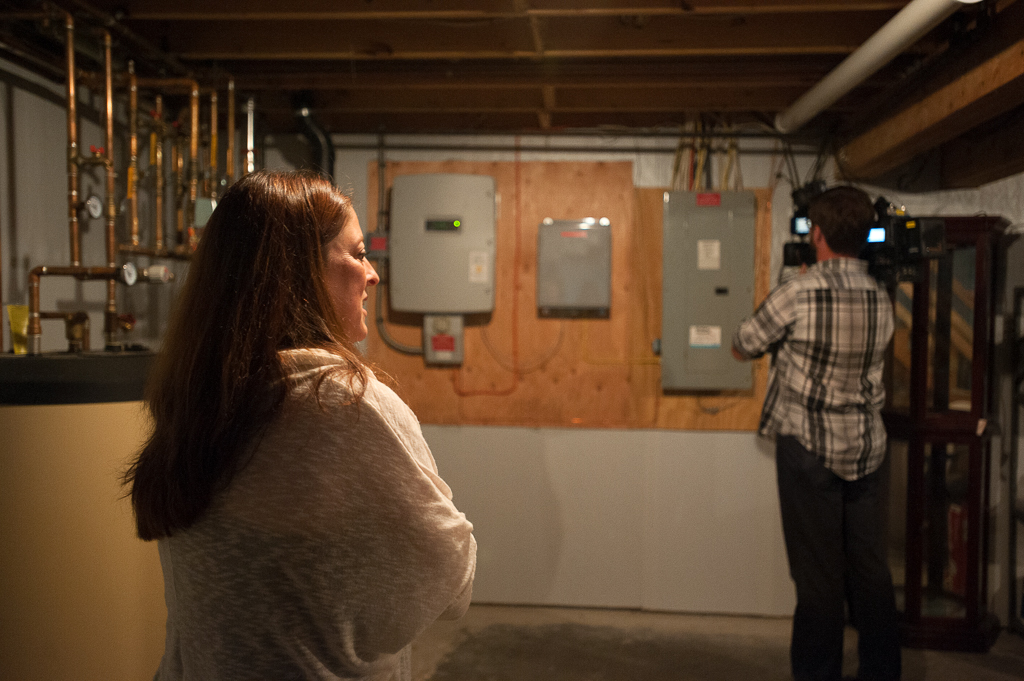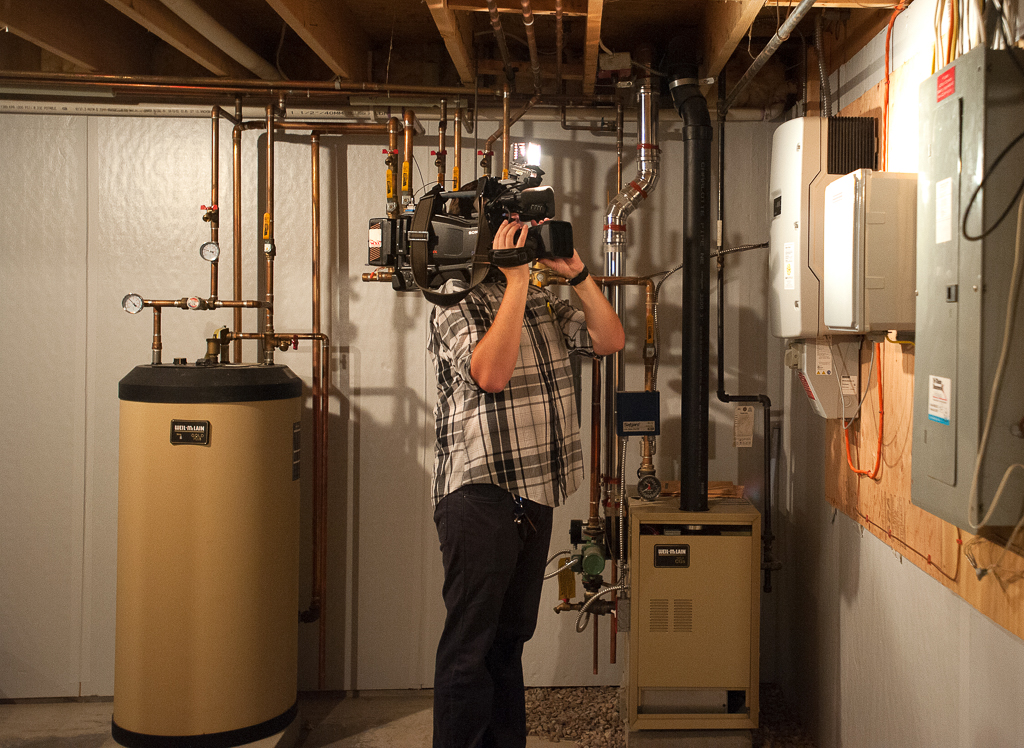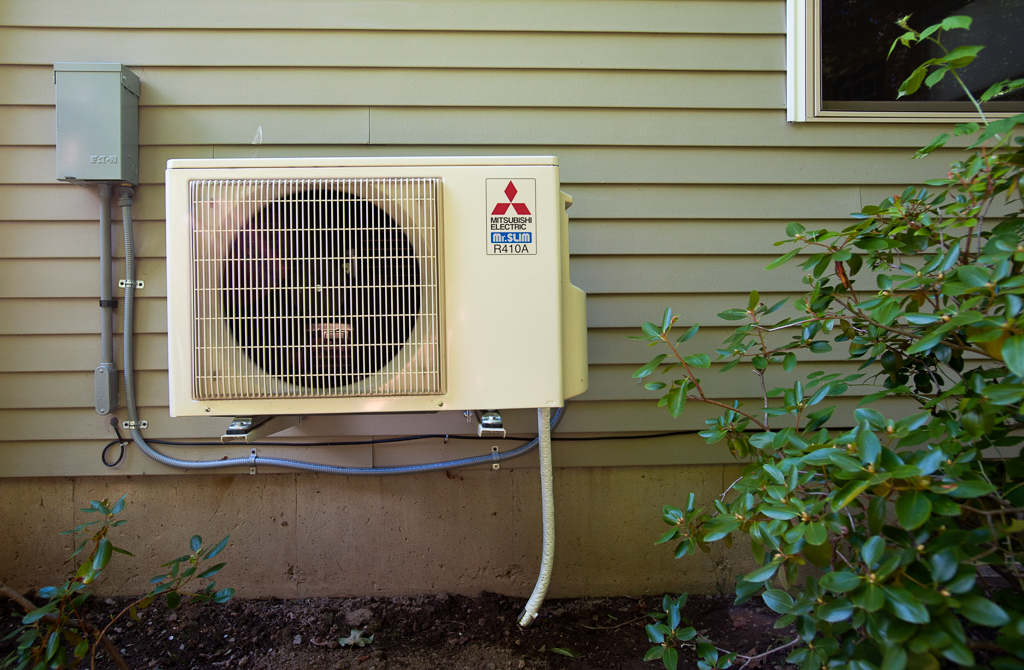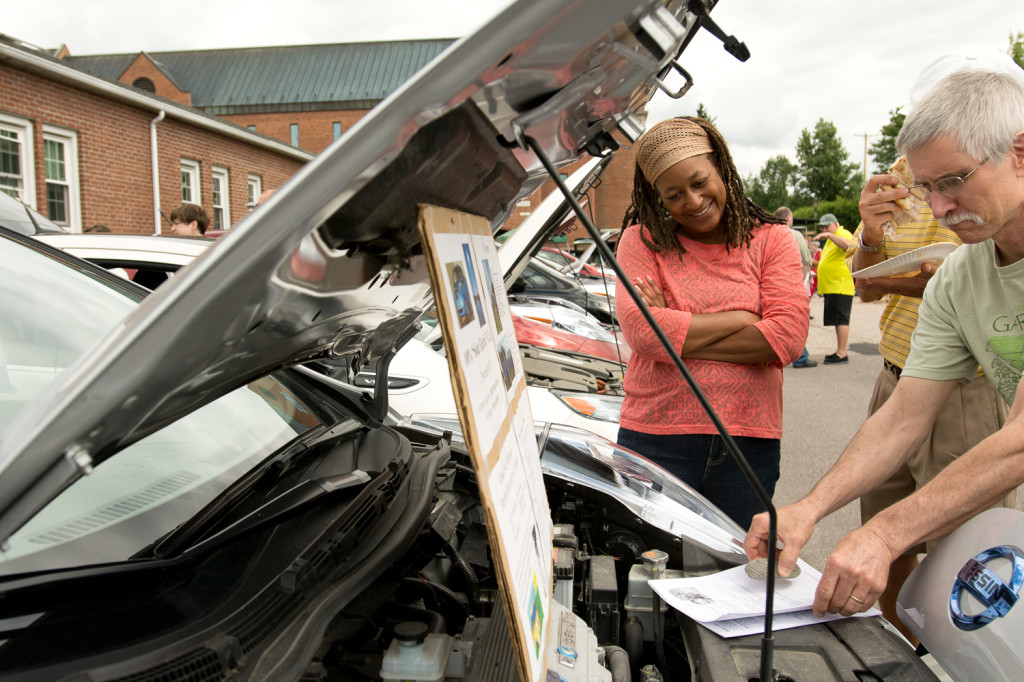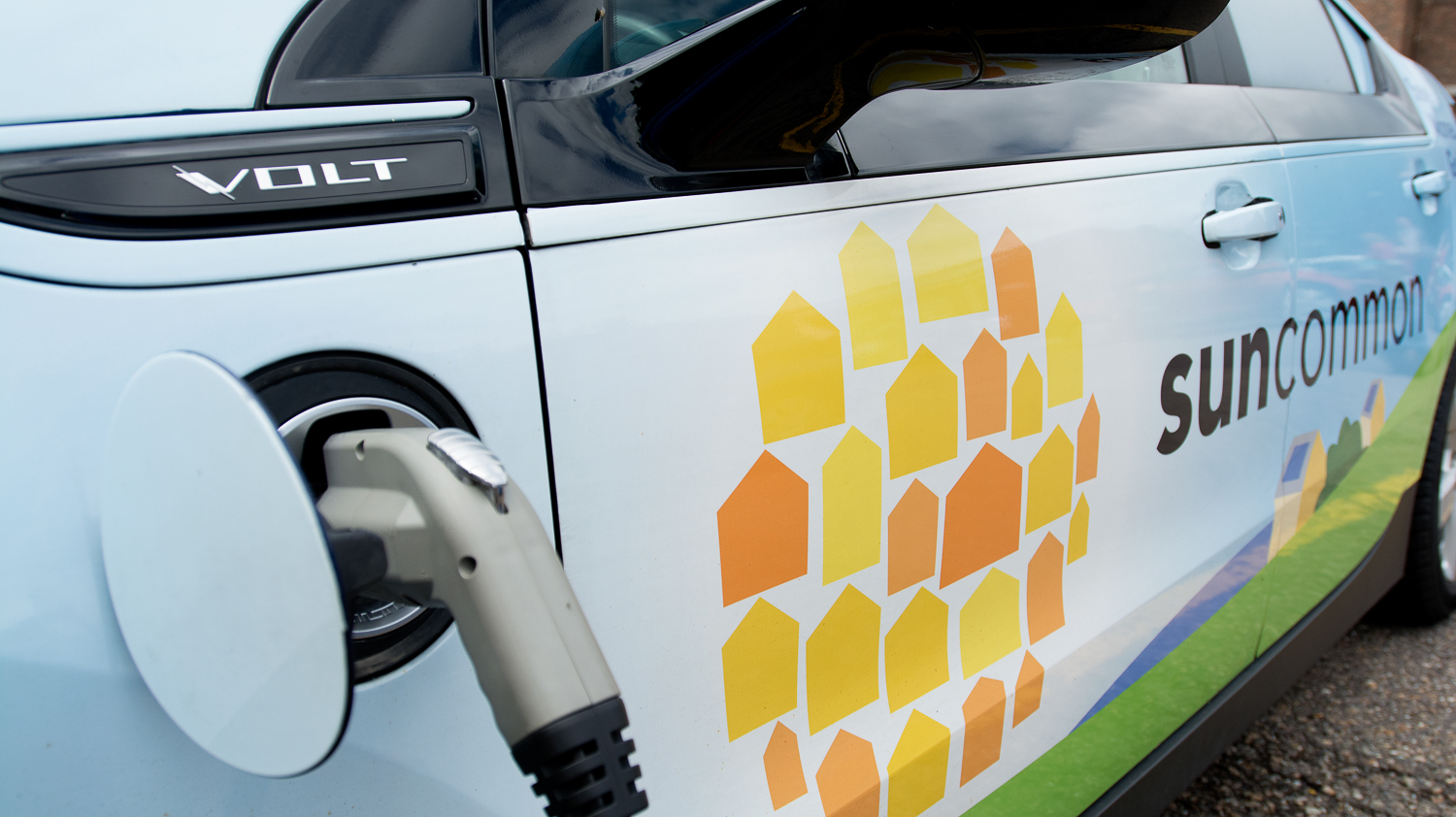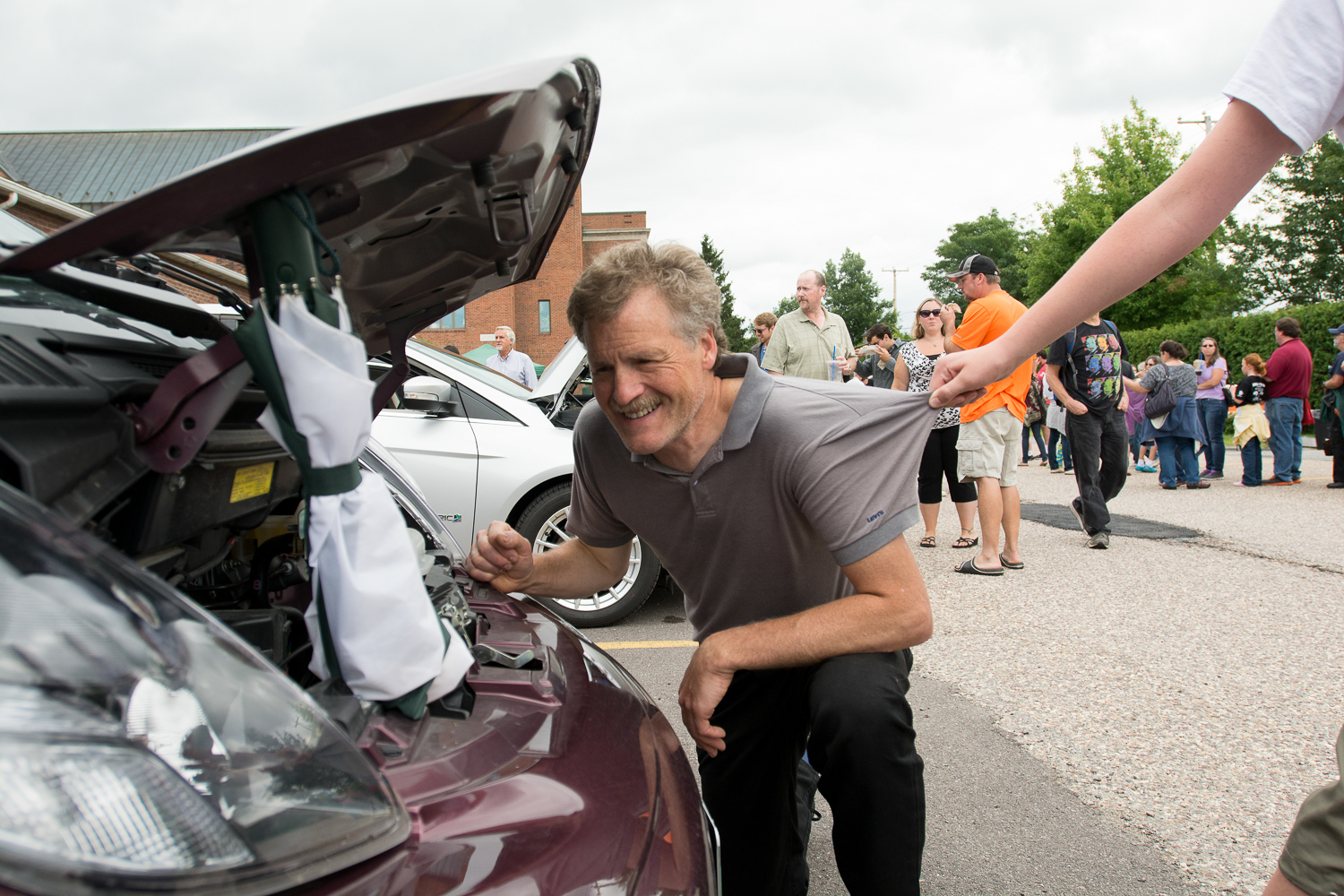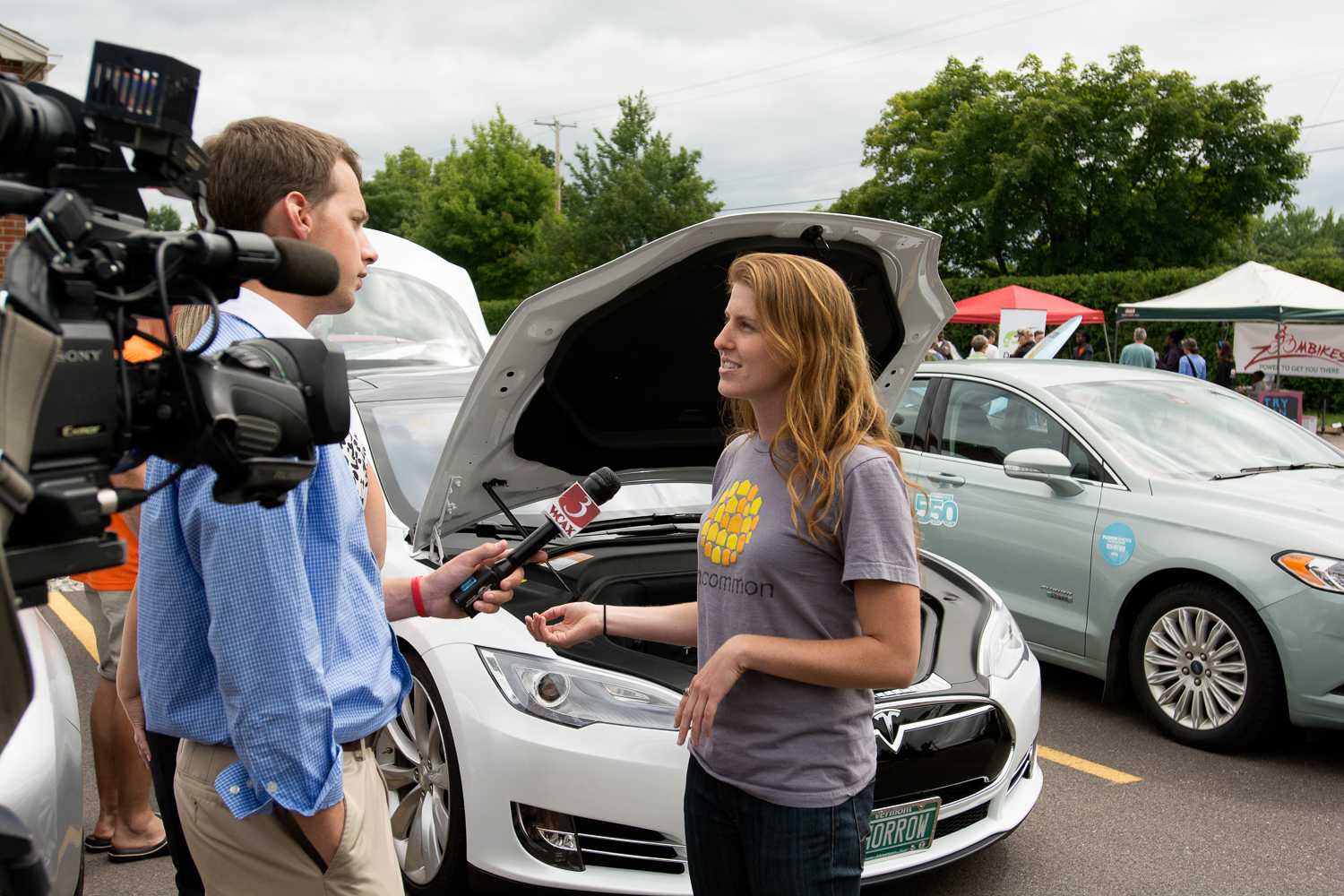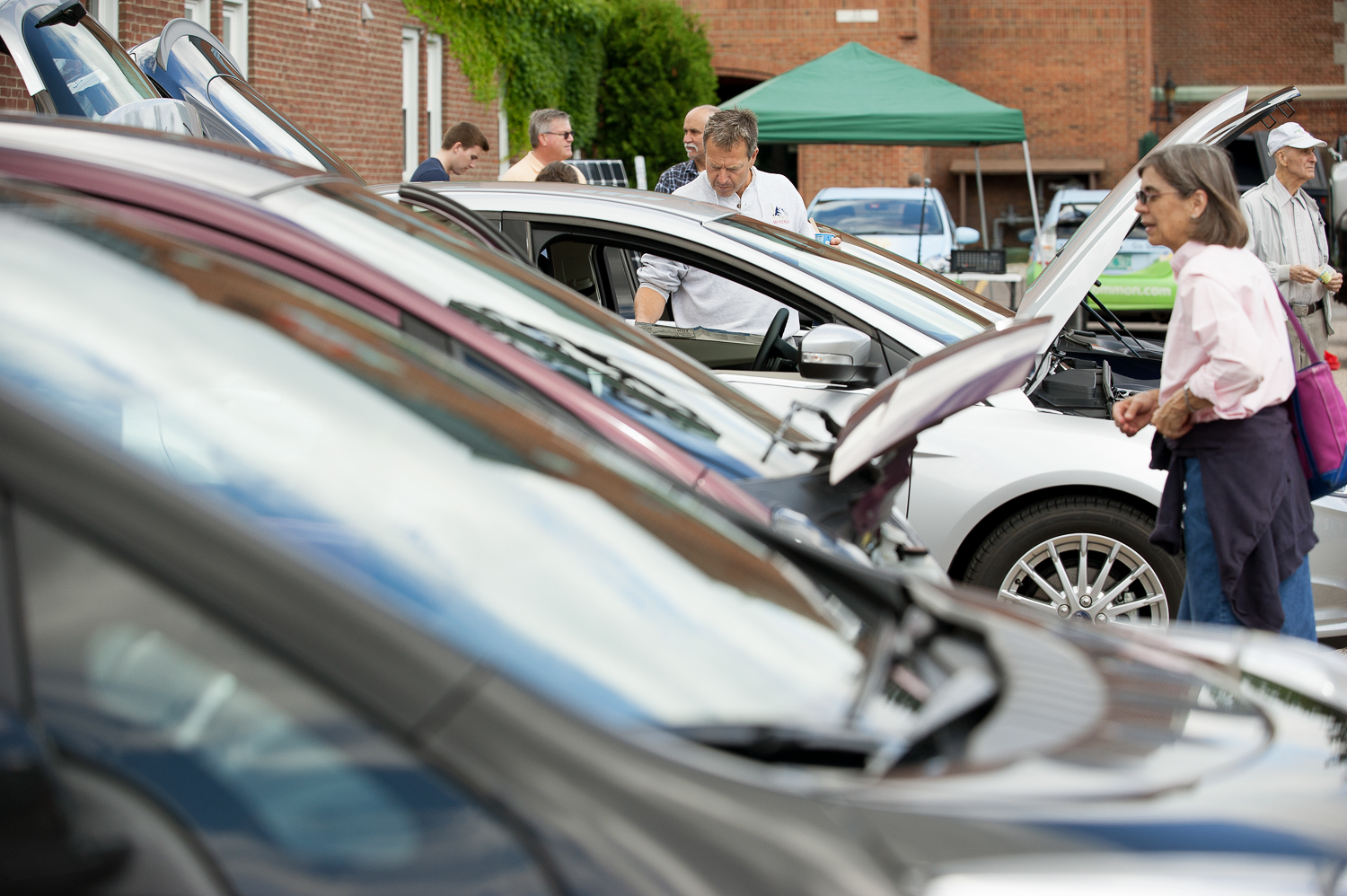by Zach Despart | October 27, 2014
WALTHAM — Weather-wise, this past Thursday wasn’t the best day to announce a major solar project. It was, in fact, nearly the worst — 40 degrees, gusting winds, overcast skies and a downpour that showed no signs of relenting.
But SunCommon co-founder Duane Peterson was determined to prevent Mother Nature from ruining his big day — when his company would announce a new wave of solar arrays priced to encourage wider adoption of solar power and sited in smaller footprints that may garner more community support.
Standing in front of a one-acre solar array in a muddy field off Route 7 in Waltham, he was even upbeat as he announced the Waterbury firm’s launch of the Vermont’s largest community solar program, which he called a CSA, or community supported array.
“The system behind us is SunCommon’s first community solar array, the birth of an innovative new program in the effort to build an independent energy future for Vermont,” he said, standing in front of the 666-panel solar array.
What exactly is a community solar array, or CSA? Like any other array it’s a field full of solar panels connected to the power grid. What’s different is that residents can purchase a percentage of the array to offset or eliminate their monthly electric bill.
Each of SunCommon’s arrays will occupy about one acre and have the capacity to generate 150 kilowatts, enough energy to power 30 homes annually. The company plans to build enough arrays around the state over the next two years to provide electricity for 2,000 Vermonters.
Peterson explained that he and James Moore founded SunCommon in 2012 to solve a problem plaguing many Vermonters: They wanted to go solar, but it was too expensive. Even if people had the cash, often their roofs were not big enough, or faced the wrong direction, to host a financially viable solar array.
Landowners that host CSAs pay no upfront costs to construct the array. They also receive a monthly stipend from SunCommon. Residents who join a CSA pay a monthly fee. Peterson said SunCommon offers CSA memberships to residents near the arrays first, so they can benefit from a utility project in their town.
SITING SOLAR ARRAYS
Peterson said that SunCommon is also committed to maintaining good relations with neighbors and towns. He unveiled what he called a “good neighbor agreement” that outlines the company’s goals to that end.
“This agreement follows our core principles and makes clear our commitments to the communities we seek to serve,” Peterson said. “We take into consideration public benefit, and aim to engage with communities early in the process.”
This summer, a SunCommon CSA approved by the Public Service Board to be sited in a residential area in New Haven caused a stir among neighbors. Peterson said the company erred by not presenting the project to the town, and promised to do so in the future.
Peterson acknowledged that while he doesn’t find solar arrays to be unappealing, beauty is in the eye of the beholder. He said SunCommon will mitigate any potential eyesores.
“We get that the 10-foot-tall community solar arrays are not to everyone’s liking,” Peterson said. “We seek to plant CSAs with care for the view they’re becoming part of. We landscape them with attractive shrubbery when needed. We surround them with goats or sheep.”
The Addison County Regional Planning Commission will host a workshop on solar array siting this Thursday evening (see related story).
Darren Springer, the deputy commissioner of the Department of Public Service, attended the press event on behalf of Gov. Peter Shumlin. He said the administration is excited to see a Vermont company leading the state forward in solar energy production.
“We’ve had an explosion of solar in the state just in the last few years,” Springer said. “We’ve more than quadrupled the amount of solar that connected to the grid in Vermont.”
Springer attributed much of that growth to changes the Legislature made this past spring to the way solar projects are taxed and by increasing the amount of net-metering projects that could connect to the electrical grid.
“Five or six years ago, if you wanted to do solar, you had to have the roof and you had to have access to $30,000 or more,” Springer said. “Now with incentives, net metering and creativity of companies like SunCommon, you have a system for someone who doesn’t need the roof space or up-front money.”
Springer said that while the Public Service Board, rather than municipal entities, has jurisdiction over utility projects, the Department of Public Service urges solar firms to reach out to towns and residents.
“We absolutely encourage companies to do that,” Springer said. “It’s really incumbent upon them to do it, because if they don’t, that’s when you’ll hear concerns raised in the board process. So if concerns can be worked out ahead of time, it’s to everyone’s benefit.”
Rep. Diane Lanpher, D-Vergennes, purchased 2 percent of the array with her husband. She praised SunCommon for enabling middle-income Vermonters to go solar.
“SunCommon has been true to its mission because it has removed the barriers for going solar, particularly for citizens and homeowners who have never participated in any type of renewable energy efforts before,” she said. “All we had to do was say ‘yes.’”
Wendy McCardle of Bristol, who purchased 3 percent of the array, said she was glad to finally have the opportunity get some of her energy from solar sources.
“I’ve been wanting to go solar for a lot of years now, and SunCommon made it a reality,” she said.
Thank you to the University of Vermont for inviting our co-founder, Duane Peterson, to speak on climate change and the future of solar in Vermont. The UVM Energy Action Seminar is described as:
A series on renewable energy to include speakers focused on U.S. and global renewable energy programs and Vermont state programs and organizations. We build on the successful experiences of the Fall 2014 series. Energy is a major impact on society, both in how we use it and how we extract it, contributing, for example, from 30 to 40 percent of our total greenhouse gases. In this seminar series we focus on the broad range of renewable energy resources that will reduce the environmental impacts of our present energy uses.
By Duane Peterson
The BCorps were here to discuss the future of mission-driven business. Burlington hosted a gathering of 350 values-led business leaders from across the country to share their best practices, successes and failures.
BCorp Certification is what’s new and exciting in socially responsible business. Just as organic certification carries with it specific definitions, and FairTrade for commodities and LEED for buildings — businesses that are certified as BCorps must pass a rigorous assessment to signal their business practices are at the cutting edge of sustainability.
More than 1,000 businesses have achieved this certification, including 20 here in Vermont. Of course, our well-known pioneers, Ben & Jerry’s, Gardener’s Supply, Seventh Generation and King Arthur Flour, jumped on this. But B-Corp certification is not just for them; it’s for any business committed to serving the needs of employees, communities and habitats while pursuing profitability. From sole proprietors to growing companies, Vermont’s Certified BCorps are using the power of business for positive social, environment and economic change — while adding our own innovations to the process.
We don’t need to leave it to the big boys and girls as these practices don’t require vast resources — every business can play. The BCorp Certification assessment offers countless opportunities to do business right while doing well.
For example, Burlington-based Rhino Foods visits all its significant suppliers to encourage sustainable sourcing and gives preference to local vendors. This builds quality and consistency in its supply chain, with average vendor relationships exceeding five years.
BCorp Certification is not just for manufacturers. Law firm Merritt & Merritt & Moulton focuses its resources on our community — having worked to develop the majority of its customers, suppliers and donations from here in Vermont.
My own business, SunCommon, relies on a community organizing model of marketing to share how going solar is finally easy and affordable. It’s more fun and way more cost-effective than a traditional approach to attracting customers.
The BCorp Certification assessment draws the applying business’ attention to a range of business practices, including personnel policies, sustainable procurement of equipment and supplies, energy and environmental practices, partner relations and community engagement.
Young businesses seeking their way in sustainability, as well as mature companies that have been doing this stuff for decades, all learn innovative best practices from the assessment. And each is offered additional ways to improve benefit performance yet.
The national BCorp Champions Retreat in Vermont included a free, public session where local businesses were exposed to this remarkable movement. Visionary BCorps took over the Flynn Theater to share in lively TED-talk fashion how this certification process and the community it creates can benefit your business.
Soon, you’ll be able to soak in their wisdom by watching the recorded versions of these talks at bcorporation.net. But to learn more about this movement now, check out the video here.
By Gordon Dritschilo, Staff Writer
Duane Peterson said Green Mountain Power has been trying to get his company to come to Rutland for two years.
Peterson, co-president of the Waterbury-based SunCommon, gave the utility its wish Wednesday, announcing the expansion into Rutland County at a news conference at Small Dog Electronics on West Street. The company, which sells solar home installations at no up-front cost, will maintain an office in the back of Small Dog.
Peterson said the company plans to create 5-10 jobs.
“We have direct employees, but we also employ local contractors to install the solar home heating and cooling units,” he said. “We just started here, but we’re looking to dramatically expand our operation.”
Peterson said the company offers wages in the $30,000 to $50,000 range and a benefit package that includes single-payer health care.
“We pay the entire health insurance premiums for our companies and their families and we pay all their out-of-pocket expenses,” he said.
In two years, Peterson said, the company sold 1,000 systems around the state, following a model where it goes community by community.
“Rutland has set a meaningful goal to become the solar capital for all New England,” Peterson said. “We want to help.”
Instead of paying up-front, the company charges a fixed monthly payment. Leslie Caldwell, a SunCommon customer living in Castleton, said she had been “racking up” net metering credits with her system this summer.
“We have not paid a bill to GMP in months,” she said.
Steve Costello, GMP’s vice president of generation and energy innovation, said SunCommon was the latest company attracted by the utility’s effort to use solar power as an economic development tool.
“Companies all over the country are thinking about Rutland,” he said. “This place is becoming very famous in the energy industry for a lot of reasons. … SunCommon is what’s known as a B corporation. … They have a dual mission. Of course, they want to make money, but they also want to have a positive influence on the communities they’re in.”
by John Herrick, September 12, 2014
Betsy Hardy of Richmond owns a two-story home built more than a century ago. Over the past three years, she has insulated her attic and basement, installed a solar array on her roof and placed a solar hot water heater in her basement.
Now, she is working with an electrician to install two heat pumps as her primary heating source this winter.
“I really want to reduce my carbon footprint,” Hardy said. And, she said, “I think it’s a good investment because it will make my home a lot more affordable for me after I retire if I don’t have to spend lots of money on fuel oil.”
Heat pumps have been available in the U.S. for decades, but it was not until recently that the technology could be used to heat homes in Vermont, where temperatures frequently dip below freezing.


Like a refrigerator or air conditioner in reverse, electric air source heat pumps use a refrigerant to extract heat from the cold outside air and pump it inside. Even in sub-zero temperatures, there is heat in the air. But as the temperature drops, the technology must work harder to extract the heat from the air. Eventually, the system becomes less efficient and stops producing heat.
Hardy is a member of the Richmond Climate Action Committee, a town energy group that provides residents information about energy efficiency and renewables. As she prepares to test the technology herself, renewable energy advocates and businesses are pushing to put heat pumps into homes before winter hits.
Proponents of the technology say heat pumps can warm homes in temperatures as low as minus-18 degrees Fahrenheit, generating average savings similar to natural gas compared to heating fuels like oil or propane.
Hardy said she is installing a large heat pump on her first floor and a smaller one in a second-floor bedroom. This year, she said she will keep her oil furnace as a back-up for colder days, but will consider replacing it with a wood stove if the heat pumps work well enough.
She said she will capitalize on the net-metering energy credits her utility gives her for the solar power her panels produce in the summer. In the winter, she will use the credits to power the heat pumps, effectively heating her home with energy from the sun year-round.
SunCommon, a Waterbury-based solar installer and financier, announced this week it is partnering with heat pump installers to offer solar-powered heat pumps with no upfront costs across their service area.
Taylor Ralph, a solar organizer with SunCommon, said heat pumps are the most efficient way to heat a home. On an annual average, the Department of Public Service estimates air source cold climate heat pumps provide 2.4 times more heat energy than the electric energy used to power the unit.
There are no state incentives for heat pumps in Vermont. The state’s efficiency utility,Efficiency Vermont, will seek permission from state regulators to use electric customers’ money to offer rebates for heat pumps, as the utility does for other energy efficiency projects.
Lawmakers approved the plan last session, but asked the utility to make sure homes are sealed up first and that the heat pumps will not impact electricity prices by increasing demand.
Nonetheless, Ralph said homeowners should not wait for heat pump rebates if they want discounts on the solar component of the installation. The state’s 25 cents per watt solar incentive will end Dec. 31. She said homeowners could receive up to $2,500 for systems planned or installed by the end of the year.
Green Mountain Power is renting heat pumps for $52.99 per month for their largest — and most popular — heat pump that produces 18,000 British thermal units, which they say can heat one or two rooms in an average home.
Homeowners can lease the heat pump for 15 years — equaling about $9,500 to have the largest pump installed and maintained annually — after which the homeowner can return the heat pump, purchase it or extend the lease. GMP says the technology can last up to 20 years.
By comparison, heat pumps typically cost from $3,000 to $4,000 per unit and can be paid off in about 3 to 6 years with immediate energy savings, according to Ben Walsh, a clean energy advocate for the Vermont Public Interest Research Group.
Amanda Beraldi, of GMP’s Energy Innovation Center, said the utility has installed 185 units in Rutland and Montpelier, and hopes to install 200 by the end of the year. She said the company plans to expand its pilot program to other communities. She said these systems save customers switching from propane or oil from 25 percent to 50 percent on heating costs.
Homeowners can use heat pumps in different ways. Much like a wood stove, heat pumps can be used to heat one or more rooms at a time. With additional installations, heat pumps can be used as a primary heating source nearly year round, but even installers recommend a backup heating source.
In the summer, heat pumps can also be used to cool homes with less electricity than a traditional air conditioner. Beraldi said heat pumps are three times more efficient than air conditioners.
While heat pumps may work in many homes, some businesses have decided to use natural gas instead, a heating option currently competitively priced with heat pumps.
Douglas DiMento, a spokesman for Agri-Mark, a company that works with about 250 Vermont dairy farmers to make cheese, whey protein and whey permeate for animal feed abroad, said the company uses a tank of No. 6 fuel oil each day to process the dairy products.
DiMento said dryers up to 90-feet tall process the protein powders. By switching to natural gas, he said the company Middlebury facility estimates saving up to $3 million per year.
He said the company looked into all sorts of technologies before deciding to switch to natural gas, including heat pumps. But he said the company’s sustainability team did not find heat pumps to be the best solution for the commercial operation.
For full article click here.
A new technology that both warms your home in winter,
and cools in summer.
August 1, 2014 by Stewart Ledbetter
Until you see one, it’s a little hard to believe. Though heat pumps have been used for years in Europe and southern states for air conditioning, these new ones effectively work in reverse in regions like ours when it is freezing outside. They run on electricity so efficient they can be as cheap as heating with wood.
Zech Gardner is showing us around his new house. It’s on a hillside in Charlotte about 2200 square feet or so and aside from a tiny woodstove in the living room, the home relies exclusively on heat pump technology.
Remember how cold it was last winter? “Total through the whole winter, we spent $356 on electric heat and we used a little bit more than a cord of wood which cost me about $180,” says Gardner, “So, $500 to heat the house for the winter.”
Now it’s true the Gardner’s home is very well insulated with triple-paned windows, but it also reflects the ultra high efficiency of this new heat pump technology.
One unit mounted high on the wall in the living room connects to an air exchanger outside the size of a big suitcase providing the same efficiency to heat or cool your home year round.
But, you don’t need a brand new house or even a very efficient one to benefit from heat pump technology. The state’s largest electric utility and environmental groups are urging homeowners of every stripe to give this a look.
Air source heat pumps cost between $3500 and $4500 each, including installation. Some homes might need more than one. “A heat pump costs about 1/3 to heat your home in the winter of what you’d be spending on oil or propane. One third,” says Clary Franko, Lead Organizer at SunCommon.
Advocates point out that heat pumps pair well with solar, which the Gardners just added to their roof a month ago. That brought this month’s electric bill to zero. A big change from the old farmhouse the Gardners used to live in across town.
“So the winter before we lived here, I spent over $3500 in oil plus three cords of wood to heat that house,” says Gardner. “This house is definitely more comfortable in the winter than that house was.”
SunCommon launches solar heat campaign with Excel Plumbing and Heating
SunCommon, Vermont’s largest residential solar company, has teamed with Excel Plumbing and Heating of Rutland to make the move toward solar heating easy and affordable for all Vermonters. Every year, Vermonters spend approximately $2.6 billion on energy, $800 million or more of which is spent on heating fuel. SunCommon said in a statement that Vermonters should be reminded of the looming financial and environmental impact of fossil fuels. By switching to solar heat via heat pumps, SunCommon said, Vermonters will tap into the least expensive, most efficient and safest way to heat and cool their home.
“SunCommon’s program has been an excellent opportunity for customers to install these products at an affordable price,” said Caroline LaCoille of Excel Plumbing and Heating. “When heat pumps are paired with SunCommon’s PV solar arrays net-zero heating capabilities are within reach, nearly eliminating the need for fossil fuel.”
“SunCommon believes that everyone deserves a healthy environment and a safer world. Energy from the sun can power our lives, heat our homes and fuel our cars. We see building Vermont’s renewable energy infrastructure as a key piece of accomplishing this vision” says Jessica Edgerly Walsh, Organizing Manager at SunCommon. “We help Vermonters by removing the barriers that have made solar and solar heat inaccessible. SunCommon is thefirst company to pair solar and heat pump technology with our no up-front cost program making it affordable for anyone who wants to be part of building our clean energy future.”
SunCommon will be hosting several community solar heat workshops for those interested in learning more about solar and heat pumps.
Barre Solar Heat Workshop – Learn about Solar PV and How to Heat/Cool with Heat Pumps
Barre Auditorium | Wednesday, October 15th 5:30-6:30 p.m.
Solar Heating and Cooling allows Vermonters to heat and cool their homes at about 1/3 the cost of oil or propane – with clean, fossil-free energy. This workshop will cover the basics: how the technologies work, how they fit into our state’s energy plans, how our “no upfront cost” program is structured, and more.
Northfield Solar Heat Workshop – Learn about Solar PV and How to Heat/Cool with Heat Pumps
Brown Public Library Community Room, Northfield | Wednesday, October 22nd 5:30-6:30 p.m.
Solar Heating and Cooling allows Vermonters to heat and cool their homes at about 1/3 the cost of oil or propane – with clean, fossil-free energy. This workshop will cover the basics: how the technologies work, how they fit into our state’s energy plans, how our “no upfront cost” program is structured, and more.
To view full article at Vermont Business Magazine, click here.
Irreversible change
by Sabra Field
SunCommon is in preliminary negotiation with a neighbor in East Barnard, and we are unsure whether to remain part of the global warming problem or become part of the solution.
New technology can be upsetting. Vermont has accepted many changes in our landscape. Handsome blue Harvestore silos, for instance, were considered ugly when they were new. Green steel truss bridges are disappearing, in favor of highway-style spans. Hardest for me to accept is the sprawl of malls and roadways. That’s change that’s irreversible.
Solar panels, on the other hand, are reversible. And I find them a whole lot better than letting a stretch of our few remaining fields disappear into forest, as has happened now to 85 percent of our lovely state. We’ve lost most of our vistas, becoming like New Hampshire where roads are tunnels in the trees.
The backbreaking labor of our ancestors to make the wilderness into a garden is demeaned by our lack of concern for our fields and meadows. I find fields planted with solar panels a fascinating succession crop that promises a harvest of independence from imported power sources.
I’d be even prouder to be a resident of East Barnard if we reject “not in my back yard” in favor of a hopeful future.
East Barnard
WCAX.COM Local Vermont News, Weather and Sports-
by Alex Apple, WCAX
VERMONT –Solar panels can be expensive to install, but with the increase in the sale of electrical heat pumps, some homeowners are now heating their homes by connecting their pumps to solar panels. Single mom Heather Angolano says she needs to save every penny she can.
She was paying around $100 per month on her electrical bill when she decided to find out if solar energy could lead to savings. “I’ve always thought the solar panels look pretty cool when you drive by the big fields of solar panels,” said Angolano who lives in Shelburne. Heather worked with the solar company SunCommon to finance the installation of 15 solar panels on her roof.
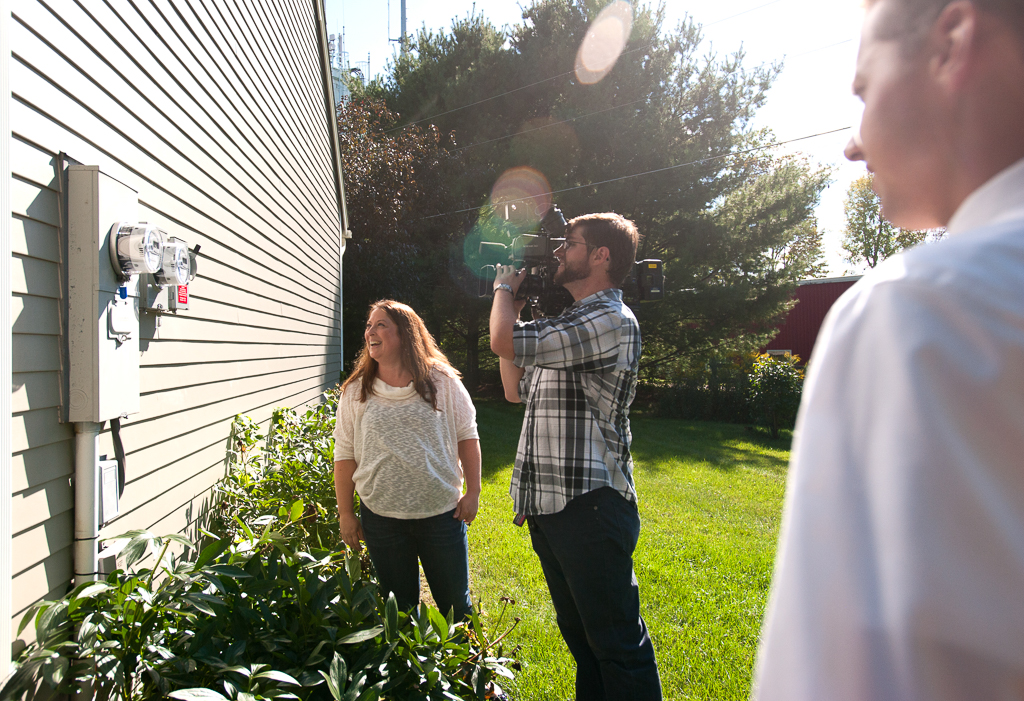

Customers who work with the company pay nothing up front; SunCommon gives them a loan that is paid back over 12 years. Jessica Edgerly of SunCommon explained, “We have both state and federal incentives that help bring the cost down as well.”
Sun Common has a new partnership with a company called Vermont Energy. Together, they set up a system for customers that allows them to run their heat pumps with solar power.
Solar energy is an alternative to natural gas. UVM professor and energy expert Mads Almassalkhi says research shows heating a home with natural gas will soon be much more expensive.
“Natural gas prices have already been at an historic low and there’s projections saying that it will be quite a bit higher in the coming years,” Almassalkhi said.
Jessica Edgerly opined, “It’s the matching of this heat pump technology with the solar which is the least expensive way for Vermonters to heat their home in the winter.”
However, solar panels are expensive to install. Almassalkhi says the incentives that Vermont provides to encourage ‘going solar’ are some of the best of any state.
“Over a 20 year horizon, you can definitely save money with solar,” Almassalkhi said. “Whether you have the capital down payment to do it is a different matter.”
Before subsidies, Almassalkhi says it costs around $25,000 to put solar panels on an average home. He also says the key for solar’s long-term viability is storing power which is monitored by a process called net-metering.
For example, Heather Angolano’s solar panels take in more energy than she uses in the summer. As a result, Green Mountain Power gives her a credit she can tap into their energy supply in the winter when the sun isn’t out as long.
“When you talk about net metering policy, it’s really about financial storage. I am generating energy, I won’t see any money from it until later,” Almassalkhi noted.
In Vermont, the homeowner is reimbursed with discounts on future electric bills. Almassalkhi called the process confusing, and he believes that is why some shy away from solar.
To read the full story on heating with solar, visit WCAX here.
At 1:07 p.m. the dark clouds passed and the sun shone over an event especially appreciative of a blue sky day: the first-ever SunCommon Sun CARnival! SunCommon celebrated the pairing of solar technology and electric vehicles by inviting electric car owners from around the region to showcase their wheels of the future.
The CARnival was about neighbors helping neighbors expand their knowledge and fuel their curiosity. SunCommon staff were on hand to help greet the 450+ people and coordinate EV test rides, but the beauty of this day was the sense of pride and ownership each driver brought to this festive block party. An unexpected but welcome surprise came when an EV driver, having seen our sign out front, pulled into the CARnival and asked if he could participate. Moments later he popped the hood, rolled the windows down and invited CARnival guests for a test ride. Our collection of EV drivers shared their stories and offered a real life lens to help demystify this new piece of technology.
As drivers took a spin around the block with community members, they offered a taste of how an EV fits into a Vermonter’s lifestyle. No sales pitch, just conversation. Neighbor to neighbor, community members peppered drivers with questions about car seats, road trips, camping, golf bag clearance in the trunk, performance in snow season, mud season, stick season…any season.
The event was focused on people and their families, so while us big kids played around in the EVs, children and families enjoyed free Open Hearth Pizza, a solar-powered bouncy house, music and Ben & Jerry’s ice cream.
In keeping with our belief in bringing joy to our community, SunCommon recently acquired its first-ever solar-powered bouncy house! You’ll start seeing our inflatable creation at various community events and festivals.
Now this is something we love to see! This particular community member was so curious about solar and EV that his family needed to peel him away from inspecting under the hood of each car. The excitement and curiosity we saw at the Sun CARnival perfectly fulfilled our goal to spark interest and educate drivers about their options for better energy independence.
Not only did our beloved community attend the event, but so did our local media! Big thanks to WPTZ, WCAX and the Burlington Free Press for swinging by our CARnival. Each outlet produced lovely stories about the event which you can read below.
Burlington Free Press: Soaking up the sun at the CARnival
WPTZ: Car show focuses on going green
Speaking of our welcome media attention, here is Solar Organizer Clary Franko speaking with Alex Apple from WCAX. Clary was the face behind the Sun CARnival and we owe her a big thank you for planning such a relaxing, informative and well-attended event. Thanks Clary!
We so enjoyed meeting and greeting each and every community member that stopped by the CARnival and look forward to seeing you at the next event!






